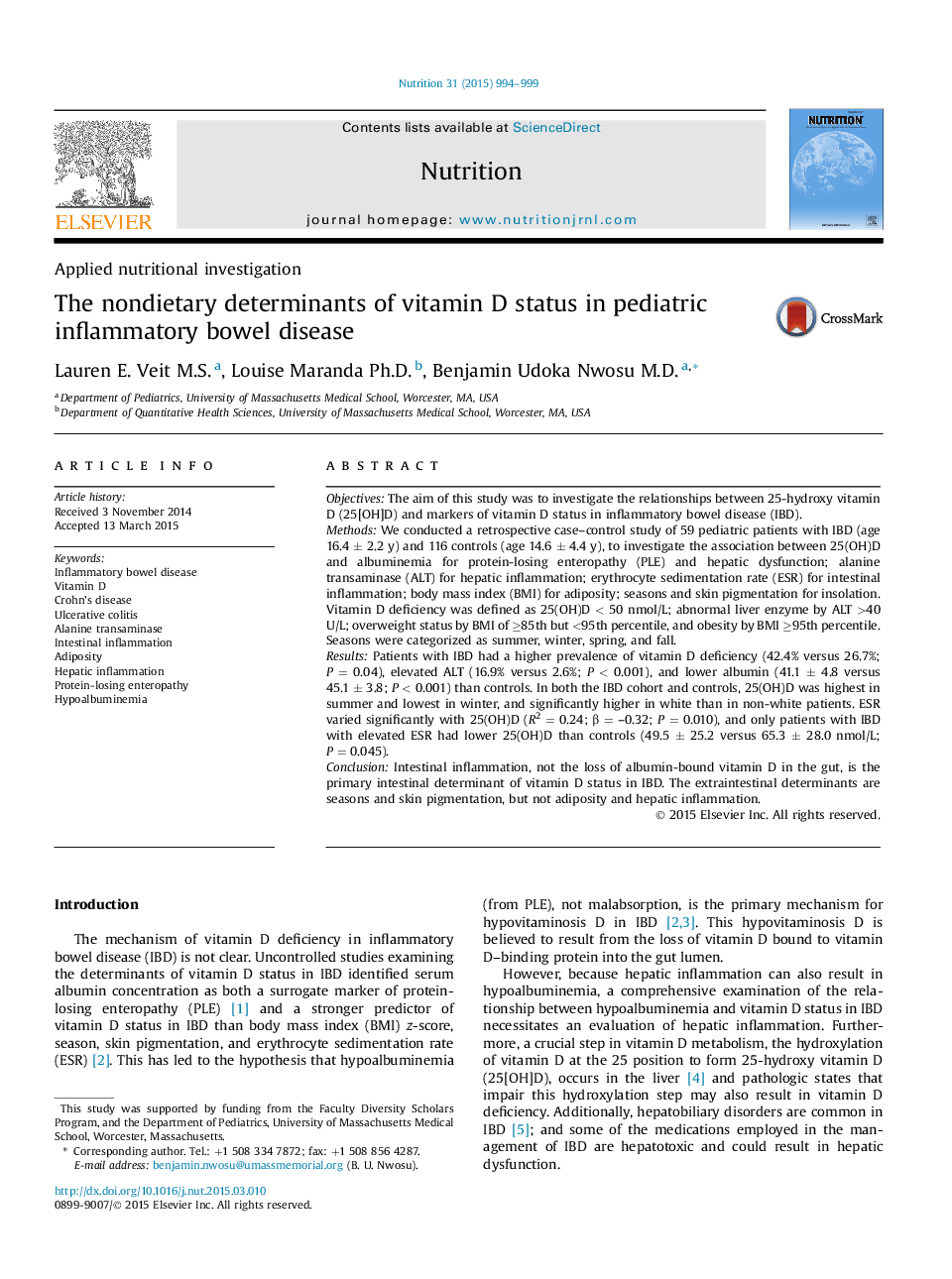| کد مقاله | کد نشریه | سال انتشار | مقاله انگلیسی | نسخه تمام متن |
|---|---|---|---|---|
| 6089303 | 1589668 | 2015 | 6 صفحه PDF | دانلود رایگان |

- We conducted a case-control study of patients with inflammatory bowel disease (IBD) and normal controls.
- There was a higher prevalence of vitamin D deficiency in the IBD group compared with controls.
- Intestinal inflammation was the key determinant of vitamin D in the IBD group.
- Seasons and skin pigmentation were also determinants of vitamin D in the IBD group.
- Adiposity and hepatic inflammation were non-determinants of vitamin D in the IBD group.
ObjectivesThe aim of this study was to investigate the relationships between 25-hydroxy vitamin D (25[OH]D) and markers of vitamin D status in inflammatory bowel disease (IBD).MethodsWe conducted a retrospective case-control study of 59 pediatric patients with IBD (age 16.4 ± 2.2 y) and 116 controls (age 14.6 ± 4.4 y), to investigate the association between 25(OH)D and albuminemia for protein-losing enteropathy (PLE) and hepatic dysfunction; alanine transaminase (ALT) for hepatic inflammation; erythrocyte sedimentation rate (ESR) for intestinal inflammation; body mass index (BMI) for adiposity; seasons and skin pigmentation for insolation. Vitamin D deficiency was defined as 25(OH)D < 50 nmol/L; abnormal liver enzyme by ALT >40 U/L; overweight status by BMI of â¥85th but <95th percentile, and obesity by BMI â¥95th percentile. Seasons were categorized as summer, winter, spring, and fall.ResultsPatients with IBD had a higher prevalence of vitamin D deficiency (42.4% versus 26.7%; P = 0.04), elevated ALT (16.9% versus 2.6%; P < 0.001), and lower albumin (41.1 ± 4.8 versus 45.1 ± 3.8; P < 0.001) than controls. In both the IBD cohort and controls, 25(OH)D was highest in summer and lowest in winter, and significantly higher in white than in non-white patients. ESR varied significantly with 25(OH)D (R2 = 0.24; β = -0.32; P = 0.010), and only patients with IBD with elevated ESR had lower 25(OH)D than controls (49.5 ± 25.2 versus 65.3 ± 28.0 nmol/L; P = 0.045).ConclusionIntestinal inflammation, not the loss of albumin-bound vitamin D in the gut, is the primary intestinal determinant of vitamin D status in IBD. The extraintestinal determinants are seasons and skin pigmentation, but not adiposity and hepatic inflammation.
Journal: Nutrition - Volume 31, Issues 7â8, JulyâAugust 2015, Pages 994-999